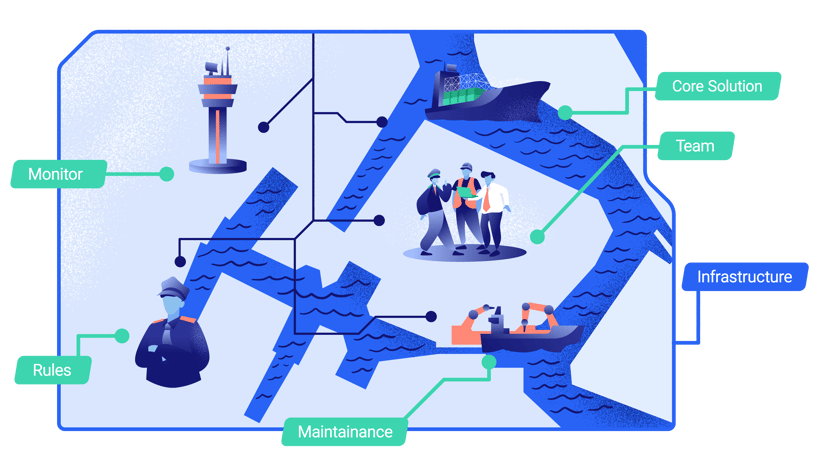Mastering MLOps: Lessons from the Port of Antwerp-Bruges Journey
In the rapidly evolving world of technology, organizations are constantly seeking ways to streamline operations and foster innovation. One such pathway is through the implementation of Machine Learning Operations (MLOps). In this blog post, we dive into the journey of the Port of Antwerp-Bruges, illustrating how they, with the assistance of Radix, have made MLOps a foundation of their Machine Learning operations.
Let's explore the key takeaways that can guide your organization in implementing or enhancing MLOps ⬇️

1. Define a Clear MLOps Vision
Identify Specific Goals
Before embarking on the MLOps journey, it is crucial to have a clear vision. The Port of Antwerp-Bruges, for instance, identified specific goals such as enhancing safety and environmental sustainability through projects like debris detection using drones. By having clear objectives, they could tailor their MLOps framework to address these specific issues.
Engage Stakeholders
The Port involved various stakeholders, including business, DevOps, and data (science) teams, to align goals and expectations. This collaborative approach ensured that the MLOps framework developed was comprehensive and addressed the needs and roles of all involved parties.
Select the Right Tools
Choosing the right tools is a critical step in the MLOps journey. Radix assisted the Port in selecting tools that facilitated collaboration and streamlined the AI development process, ensuring a smooth transition from concept to implementation.
2. Collaborative Team Structure
Train & Onboard Teams
Training and onboarding teams is a vital step in ensuring the successful implementation of MLOps. The Port, with the help of Radix, provided training to team members to help them adapt to the MLOps framework, fostering a culture of continuous learning and adaptation.
Iterative Development and Feedback
An iterative approach to development, coupled with continuous feedback, was a hallmark of the Port's journey. This approach allowed for the fine-tuning of processes and the incorporation of valuable insights gained during the development phase, ensuring a robust and effective MLOps framework.
3. Implementing and Scaling MLOps
Choose the Right Pilot Project
Choosing the right pilot project is a critical step in the MLOps journey. The Port selected a project related to berthing fee predictions, which was relatively simple yet impactful, to test the effectiveness of the MLOps framework before scaling to more complex projects.
Continuous Improvement
The journey doesn't end with the implementation of the MLOps framework. The Port of Antwerp-Bruges understands that it is a continuous journey, with room for further development and refinement to meet evolving needs and challenges.
Documentation and Compliance
Ensuring proper documentation and compliance with regulations is a vital aspect of MLOps. The Port ensured that all processes were documented, facilitating transparency and adherence to non-functional requirements, fostering a culture of accountability and excellence.
Conclusion
The journey of the Port of Antwerp-Bruges, facilitated by Radix, offers valuable insights into the successful implementation of MLOps. By defining a clear vision, fostering collaboration, and adopting an iterative approach to development, organizations can streamline operations and foster innovation through MLOps. As your organization embarks on its MLOps journey, these actionable insights will guide you towards creating business impact.
Questions on how you can implement MLOps? Book a call with Shoera below:

